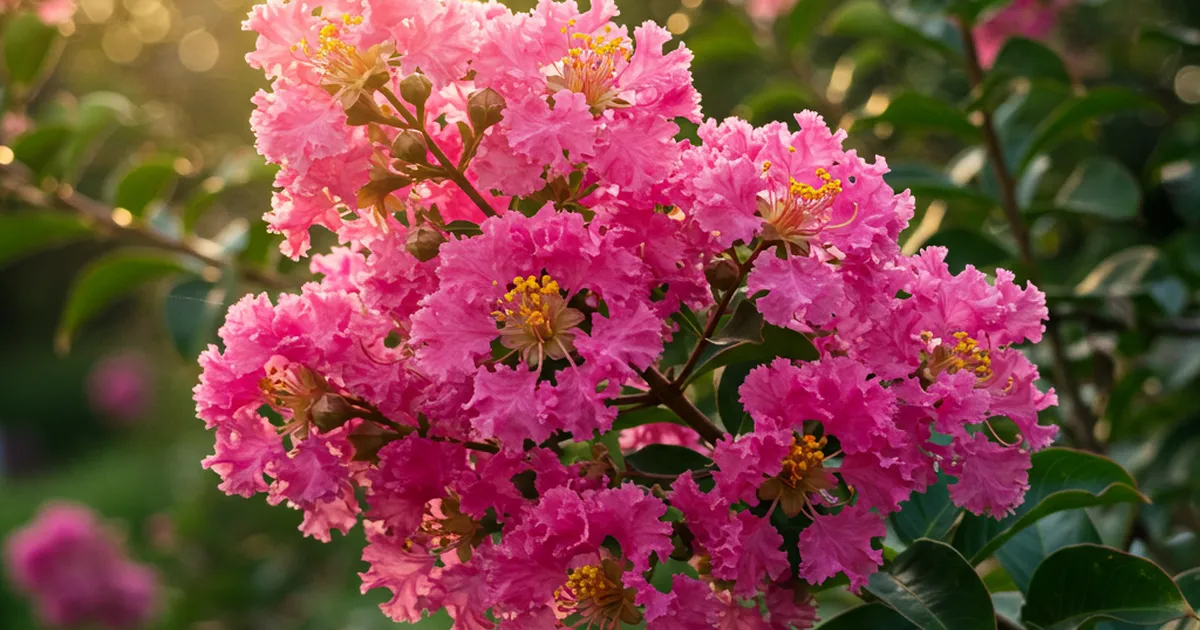Opening:
If you are curious about the reason behind your crepe myrtle shrubs or trees having brown leaves, the first aspect to consider is the time of year.
Typically, browning leaves in late summer are a result of heat, though other factors such as excessive fertilizer, problems with watering, or diseases could also be at play.
Comparison: Brown Leaves vs. Brown Spots
When crepe myrtle leaves turn brown, they may either turn brown entirely or show browning along the edges, sometimes with curling or lack of blooming. This is different from the appearance of brown spots in the center of the leaf.
These spots could be a sign of Cercospora leaf spot disease, which is caused by a specific type of fungus and presents a distinct issue. Cercospora leaf spot tends to be more problematic in regions with high humidity than in other areas.
If you notice brown spotting, make sure to provide ample space for your bushes when planting to encourage good air circulation. Additionally, prune and properly dispose of affected branches to prevent the spread of the fungus and avoid Cercospora leaf spot.
Looking for more gardening advice? Subscribe to our complimentary gardening newsletter for top tips on growth, troubleshooting solutions, and more!
Reasons for Crepe Myrtle Leaves Turning Brown
During Summer
If you notice brown leaves (or partially brown leaves) on a crepe myrtle shrub at the end of a dry summer, it may be caused by drought.
These shrubs thrive in the southeastern United States, where they are highly favored for their ability to endure the summer heat.
However, they require water, and they can dry out during extremely hot summers with minimal rainfall. If you suspect drought is the issue, water the plants sufficiently to maintain evenly moist soil without being overly wet.
During Spring
If you see brown leaves on your crepe myrtle plant in the spring, it might be due to a sudden cold snap in your area.
Crepe myrtle is less tolerant of cold temperatures compared to many other shrubs. A rapid dr

op in temperature after the delicate leaves have emerged can result in their demise.
Unless you grow your bush in a sheltered location (which requires advanced planning), there is little you can do to prevent the issue of browning in this scenario.
Your Crepe Myrtle Shrub Might Not Perish
Here’s some positive news: Neither instance of brown leaves (whether in summer or spring) necessarily spells doom for your crepe myrtle. Browning caused by a moderate cold spell may mar the plant’s appearance, but it’s unlikely to be fatal for your shrub.
While this shrub is more susceptible to perishing from drought, rectifying the situation is often quite manageable.
- Rely on artificial irrigation as soon as you notice the initial signs of browning.
- Being vigilant is crucial—keep a close eye on your plants and examine them daily.
- If your crepe myrtle shrubs don’t seem to be thriving as usual, start investigating. Many plant issues can be resolved quite easily if identified early and addressed promptly.
Some Varieties of Crepe Myrtles Are More Resistant to Leaf Spot Than Others
Not all crepe myrtle shrubs are the same. Some have been specifically bred to exhibit better resistance to diseases like Cercospora leaf spot compared to others. Dr. Allan Armitage has compiled a helpful list of both resistant and susceptible types to Cercospora leaf spot.
If you reside in a region with relatively low humidity during summers, you might be able to grow one of the susceptible varieties, which include:
- Dynamite: Red flowers; reaching 20 feet in height
- Pink Velour: Featuring deep pink flowers; growing to 10 to 12 feet tall
- Cheyenne: Red flowers; 8 to 10 feet in height
If you live in a region characterized by very humid summers, it is advisable to opt for a resistant variety like:
- Apalachee: Lavender flowers; reaching 15 feet in height
- Red Rocket: Red flowers; growing to 10 to 15 feet tall

